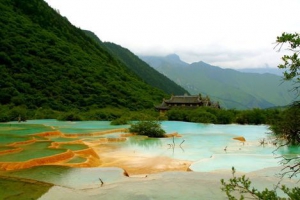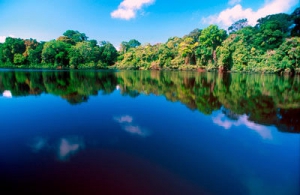980 million people traveled internationally in 2010, a 4% increase over the previous year, and forecasts expect 1.6 billion tourists by the year 2020. Travel & Tourism as a sector accounts for 258 million jobs globally, and provides crucial opportunities for investment, economic growth, and fostering cultural awareness. Tourism can also be a powerful tool for tackling major challenges such as conservation and poverty alleviation.
But how do environmentally and socially conscious travelers navigate the complex differences between ecotourism, sustainable tourism, socially responsible tourism and the other myriad forms of traveling responsibly?
Ecotourism vs Sustainable Tourism
Industry consensus agrees ecotourism is more focused on ecological conservation and educating travelers on local environments and natural surroundings, whereas sustainable tourism focuses on travel that has minimal impact on the environment and local communities. Ecotourism is a form of tourism, or a category of vacation similar to beach, adventure, health, or cultural, while the concept of sustainability can be applied to all types of tourism.
As established by The International Ecotourism Society (TIES) in 1990, ecotourism is “Responsible travel to natural areas that conserves the environment and improves the well-being of local people.” Another widely cited definition of ecotourism is “purposeful travel to natural areas to understand the culture and natural history of the environment; taking care not to alter the integrity of the ecosystem; producing economic opportunities that make the conservation of natural resources beneficial to local people.”
The Global Sustainable Tourism Council (GSTC) is a global initiative dedicated to promoting sustainable tourism practices around the world. GSTC and its global members of UN agencies, global travel companies, hotels, tourism boards and tour operators follow the Global Sustainable Tourism Criteria. The 23 criteria focus on best practices to sustain natural and cultural resources, maximize social and economic benefits for the local community, and minimize negative impacts to the environment.
Currently there is no internationally accredited body charged with overseeing the standards, monitoring and assessment, or certification for the ecotourism or sustainable tourism industries. Without an established standard it is easy to be confused by organizations that greenwash services and offerings as “environmentally friendly.” Others argue that ecotourism is an oxymoron, as travel implicitly entails activities that are detrimental to the environment. Planes, trains and automobiles use harmful fossil fuels that emit CO2, and forestland is often cleared for roads and railways.
Ecotourism and Sustainable Tourism in Action
Costa Rica was a pioneer in ecotourism and exemplifies how tourism can be a key pillar of economic development policy. Costa Rica is now the premiere destination for ecotourism, and in 2010 tourism contributed 5.5% of the country’s GDP. Jordan serves as another model of successfully integrating conservation and socio-economic development. Ecotourism generated $2.1 million in 2010, and Jordan’s Royal Society for the Conservation of Nature has received several global awards for its success in alleviating poverty and creating employment for local communities, in combination with integrating nature conservation.
Myriad sites offer options for tours and hotels that cater to a more environmentally friendly and sustainable type of traveling experience. The New York Times travel section allows viewers to search potential destinations using ecotourism as a criteria, and Condé Nast Traveler highlights Ecotourism and Sustainable Travel under Expert Travel Tips.
The Earthwatch Institute, organizes trips where travelers work alongside scientists and explorers on field expeditions and Sierra Club’s travel arm Sierra Club Outing allows environmentalist to learn something on vacation and inflict minimal harm on the surrounding environment.
At the industry level, hotels and resorts are taking on sustainability commitments that focus on recycling, decreasing water and energy usage, reducing greenhouse gas emissions,and environmentally friendly design. Many in the industry show a commitment to a holistic approach to sustainability which includes the construction of Leadership in Energy & Environmental Design (LEED) certified buildings, providing eco-friendly and organic food and wine selections, and rewarding guests who make “green choices.” Marriott, which boasts 2,800 hotels worldwide, offers guests hotel points or vouchers for the hotel restaurant should they choose to not having linens and towels washed daily.
Understanding the difference between sustainable tourism and ecotourism educates travelers on the significant impact their travel decisions have on the environment, economy and local communities they visit. Participating in sustainable tourism, or more specifically ecotourism vacations, means travelers can contribute to development and conservation efforts, while enjoying themselves on vacation.







































